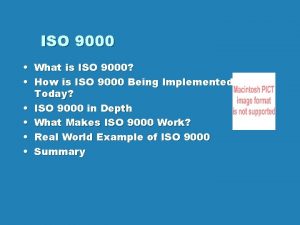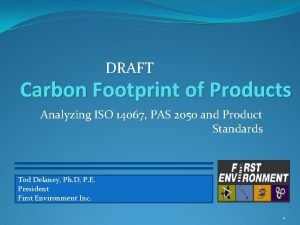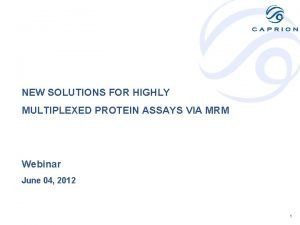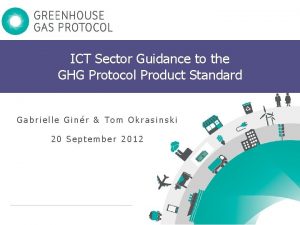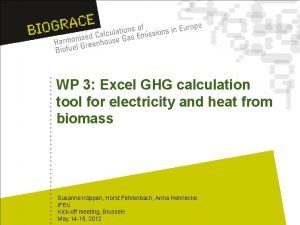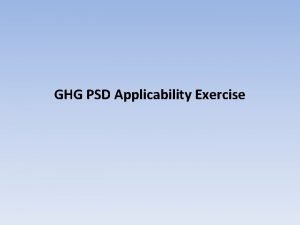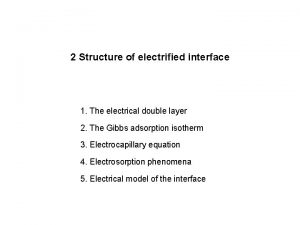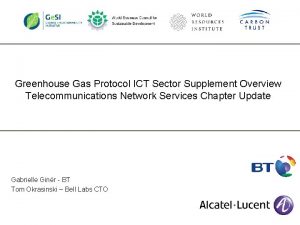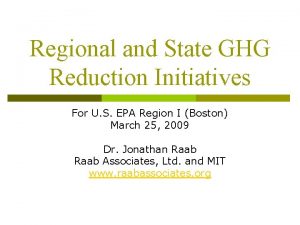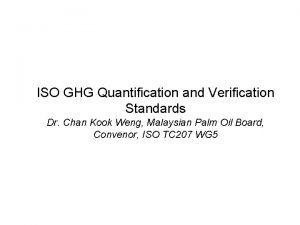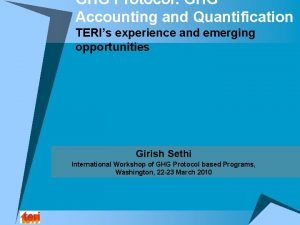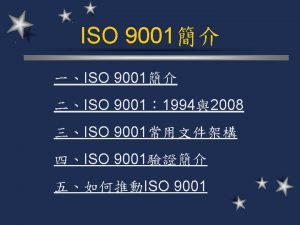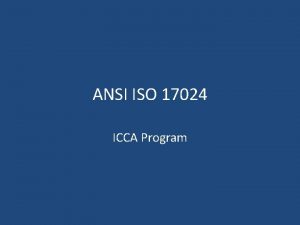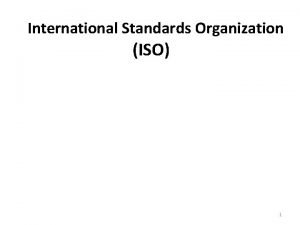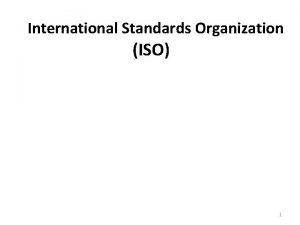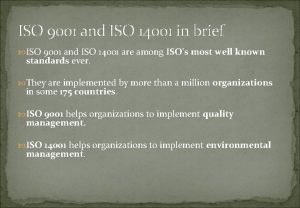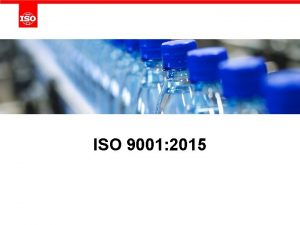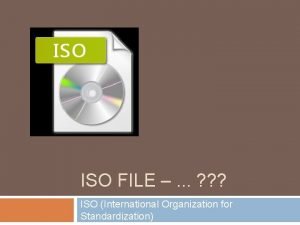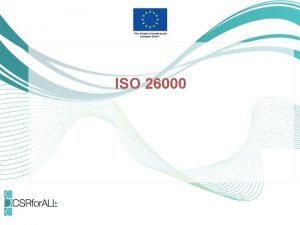ISO GHG Quantification and Verification Standards Dr Chan











- Slides: 11

• ISO GHG Quantification and Verification Standards Dr. Chan Kook Weng, Malaysian Palm Oil Board, Convenor, ISO TC 207 WG 5

ISO Facts ISO is the International Organization for Standardization; ISO was established in 1947; ISO is an NGO based in Geneva; ISO is a federation of 140 national standards bodies and 500 international/regional liaison members; ISO is comprised of 2, 850 technical committees, subcommittees and working groups; ISO has published over 13, 000 international standards; ISO meetings attract some 30, 000 experts a year; ISO standards are consensus based.

ISO WG 5 on Climate Change TC 207 - Environmental Management Working Group 5 on Climate Change Ø Established in 2002. Ø Malaysia-Canada leadership. Ø Developing new International Standard for quantifying, reporting and verifying organization- and project-level GHG emissions / removals. International National “Mirror” Committees - Government - Business - Service Providers - NGOs

ISO WG 5 Deliverables ISO 14064 - Greenhouse gases (1 Standard in 3 Parts) Part 1: Specification for the quantification, monitoring and reporting of organization emissions and removals Part 2: Specification for the quantification, monitoring and reporting of project emissions and removals Part 3: Specification and guidance for validation, verification and certification

Part 1: Specification for the quantification, monitoring and reporting of organization emissions and removals (DRAFT) 1 Scope 5. 5 Base year GHG inventory 2 Normative References 3 Definitions 4 Principles 5. 5. 1 Base year selection/ establishment 5. 5. 2 Base year GHG inventory adjustment 5 GHG inventory design and development 5. 6 Assessing and reducing uncertainty 5. 1 Organizational boundaries 5. 2 GHG emission and removal boundaries 6 GHG inventory quality management 5. 3 Quantification of GHG emissions and removals 7 GHG reporting 8 Verification 5. 4 GHG inventory components 8. 1 Preparing for third party verification 5. 4. 1 Gross GHG emissions and removals 8. 2 First party verification 5. 4. 2 Internal GHG projects 5. 4. 3 External GHG projects 5. 4. 4 Targeted internal actions 5. 4. 5 GHG inventory matrix

Part 2: Specification for the quantification, monitoring and reporting of project emissions and removals (DRAFT) 1 Scope 2 Normative references 5. 4 GHG project implementation – Monitor, quantify and report 5. 4. 1 Implement project master plan procedures 3 Definitions 4 Principles 5. 4. 2 Report on GHG project implementation 5 Requirements for GHG projects 5. 1 The GHG project cycle 5. 2 General requirements 5. 3 GHG project planning 5. 3. 1 Project elements 5. 3. 2 Baseline elements 5. 3. 3 GHG emissions reductions and removal enhancements 5. 3. 4 Quality, monitoring and reporting elements 5. 3. 5 Validate the GHG project 5. 4. 3 Verify the GHG project assertion

Part 3: Specification and guidance for validation, verification and certification (DRAFT) 5. 8 Assessment of the internal control environment 3 Definitions 5. 9 Assessment of GHG information 4 Principles 5. 10 Assessment of the GHG assertion 5 Validation and verification requirements 5. 11 Completion of the validation or verification 1 Scope 2 Normative references 5. 1 General 5. 12 Validation report 5. 2 Quality control 5. 13 Validation and verification statement 5. 3 Validation or verification objectives, scope, and criteria 5. 14 Certification of GHG performance 5. 4 Strategic review 5. 5 GHG information sample design 5. 6 Preparation for the validation or verification 5. 7 Assessment against principles and requirements of a GHG scheme or standard or internal programmes

ISO WG 5 Schedule WG 5 Actual Dates 1 st WG 5 Committee Drafts WG 5 Working Drafts WG 5 Meetings months 6/02 0 Next Meeting, March 2004, UK 1 st 2 nd 12/02 6/03 12/03 6/04 6 12 18 24 1 st Working Committee Draft ISO Target Dates 12/04 30 6/05 36 Draft Final Draft International Standard

The ISO Value Add Process Ø Systematic participation by up to 140 countries and liaison bodies. Ø ISO standards represent international consensus. Ø ISO standards are “living documents”. Verifiability Ø WG 5 intends to develop GHG quantification standards that can be verified by independent third parties. Ø WG 5 is developing a validation/verification standard. Infrastructure Ø ISO federation includes extensive network of national bodies and associated accreditation/verification systems. Ø Opportunity to reduce transaction costs. Reputation Ø The ISO mark has credibility. Ø ISO standards are used as international benchmarks of good practice.

Consistency Issues Ø ISO WG 5’s stated goal is that ISO 14064 should be compatible with the GHG Protocol. Entity vs. Project Ø Consistency important in both areas (eg, markets, transaction costs). Ø Perhaps more challenging for projects given technical complexities (eg, baseline, additionality, leakage). Ø “Technical” and “GHG scheme/regime” components. Important Areas Ø Boundaries (eg, organizational, project, emissions). Ø Baseline, additionality, leakage rules. Ø Level of assurance (eg, 1 st, 2 nd, 3 rd party validation / verification). “Quality” of GHG Units Ø Diminish market liquidity (eg, ability to buy and sell at will) in some segments? Ø Increase transaction costs, slow down investment? Ø Decrease market confidence, increase public skepticism. Assuring Consistency Ø International standards.

Guiding Principles • Technical rigour. • Speed to market. • Extensive participation. • Policy/regime neutral.
